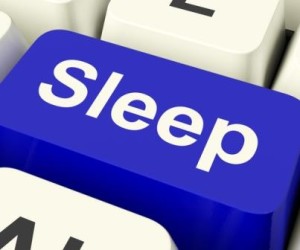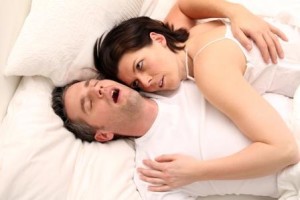Sleep Apnea: A Weighty Issue

Sometimes we just need the sleep button and get some rest.
Sleep apnea is the condition for where there are pauses in breathing during sleep. These are defined by medical terminology when an individual literally stops breathing. There are two types of apneas Central and Obstructive. This is a common problem among the morbidly obese which requires them to wear an oxygen mask so they can breathe since that’s due in part of their weight bearing down on their chest crushing their rib cage and lungs.
According to medical reports the population at risk are obese middle – aged males since physiology doesn’t make women potential sufferers of sleep apnea. The problem is that people who do fall asleep due to sleep apnea will go through brief periods where people think they’re not going to wake up. Keep in mind that this is very serious because if it’s not properly diagnosed it can be life threatening. People with excessive weight usually morbidly obese constantly have to deal with frequent episodes of paused breathing. Snoring is a common problem with the morbidly obese and constant gasping for air while sleeping is another problem. Obstructive sleep apnea can be dangerous to the heart because it’s prolonging and deprivation of oxygen to keep the circulation flowing efficiently.
Other symptoms that are deemed non – specific are headaches, irritability, moodiness, difficulty concentrating, Noctoria (getting up in the middle of the night to urinate), increased urination, decreased sexual drive, increased heart rate, anxiety, depression, esophageal reflux (acid reflux disease), and profuse heavy sweating at night.
Sleep apnea has also been linked to congestive and congenital heart failure usually found in people who are diagnosed as morbidly obese because of the excessive weight on them. This is from severe and prolonged cases meaning the individual(s) were not being treated and had let the condition get to the point that it’s no longer treatable.
Individuals born with Down’s Syndrome are likely to develop obstructive sleep apnea since 50% of the population that has this genetic condition are likely to be diagnosed because of having an enlarged head, adenoids, tonsils, tongue, and narrowing of the nasopharnyx. Pharyngeal flap surgery has also been noted to cause sleep apnea in patients because of the obstruction in the breathing pattern after surgery which if not monitored can be life threatening. There are different treatments for people with sleep apnea and doctors and ENT (Ear Nose and Throat) specialists take the following into consideration for designing a treatment plan for those who are diagnosed with this condition.
The factors that are considered are an individual’s medical history, severity of the disorder, and the specific cause for the obstruction. Some treatments also incorporate a lifestyle change, avoiding alcohol and medications that can relax the nervous system.
Other lifestyle changes is losing weight and quitting smoking, and incorporate things like elevating themselves while sleeping so that they can breathe using slanted pillows. The weight issue is the biggest lifestyle concern because that causes some people to be confined to beds where they can’t move and be active contributing further into a person’s weight gain.
Usually if someone who’s morbidly obese and loses about 50 pounds within a couple months their condition improves, but it’s usually up to a steady support system to get someone on a set routine and healthy eating plan that helps to get their weight down so they can qualify for other treatments to help them maintain weight loss which is either through gastric bypass which has to be strongly enforced since this surgery is irreversible and you have to eat differently and undergo a major lifestyle change. The other option is lap band, which is reversible, but again to maintain the weight loss to improve sleep and breathing patterns comes with monitoring what one eats and exercise to help improve breathing patterns.
Causes of Snoring and Finding Treatment through Surgery
Snoring is among the most common sleep problems. While it is neither a debilitating nor death threatening condition, it still causes some grave problems that may or may

Is your spouse’s snoring keeping you awake all night ? There is a known link between snoring and sleep apnea.
not directly root from its effects.
Most middle – aged men are the victims and there is high risk towards obese persons. This is true since fleshy necks are most likely to have more muscles that would collapse during relaxed breathing.
Snoring roots from narrowed air passage in between the throat and the nose. When we sleep, this passage narrows due to relaxation of the tissues. This explains why we only snore when we are at our most restful position.
With a narrowed passage, the pressure of the air from the mouth and back are highly increased. Thus, this will drive the flapping muscles to vibrate more, which in turn create the snoring sounds.
Anything that helps narrow the air passage and the muscles to relax will most likely initiate the vibrations. Say, substances that promote muscle relaxation will encourage the tongue to fall back or the throat muscles to be relived from tension.
Stuffy nose can also be considered as a culprit since it limits the space in which air can pass through. Thus, there are specific cases of snoring that only occur when one has colds or inflamed sinuses.
Snoring can also be attributed to the position by which the patient sleeps. Sleeping on one’s back will cause your tongue and throat muscles to be pulled back by gravity. Therefore, patients are advised to get used with a sideward sleep position.
Since the only problem here is the unwanted relaxation of the muscles and tissues lining the respiratory tract, specifically the throat and the nasal passages, the most possible cure is to repair any excess muscles.
An otolaryngologist will help determine what truly causes your snoring problem. He is a specialist in conditions that are directly linked with ear, nose and throat problems. He is the only authority that can create a thorough examination of your condition.
The traditional method of surgery for snoring is the uvulopalatoharyngoplasty or UPPP, which aims to widen the air passages. This process normally removes excess tissues that cause the narrowing of the throat, including uvula tissue, adenoids, tonsils and those that are covered by the pharynx.
The more intensive version of this method called laser – assisted uvulopalatoplasty or LAUP uses laser in the removal of the muscles that inhibit normal air passage.
Both methods normally work best for mild snorers and don’t necessarily work for those who are suffering from sleep apnea or disruptive snoring.
Nasal surgery, on the other hand, is recommended for patients whose snoring is caused by unnecessary blockage in the nasal septum.
Tongue Suspension Procedure is a method that aims to keep the tongue from falling back. This is done by inserting a small screw in the lower jaw to which the tongue is stitched below.
Shrinking of throat tissue is also a common method of creating solutions. Somnoplasty is a method that uses an electrode needle that release energy to shrink the excess tissue. This then will be reabsorbed by the body.
Surgery may not be a simple way of fixing your floppy throat muscles. But this procedure creates the ultimate solutions. Remember though that there are specific methods for specific causes. Be careful that you first discuss all concerns with your physician so that proper treatment is delivered to you.
Sleep Apnea: A Sleep Disorder That Can Be Fatal

Feeling sleepy all the time ? You could be experiencing the symptoms of sleep apnea.
Sleep Apnea is a serious sleep disorder that can be life threatening and at times fatal. People with sleep apnea often fall asleep normally; however, once asleep their ability to breathe is blocked. Usually this inability to breathe is caused by the muscles in the throat relaxing too much and collapsing into the airway. The body then sends a signal to the brain that breathing has temporarily been blocked. This causes the person to wake up and start breathing again.
The cycle of interrupted breathing can occur many times throughout the night. These episodes can occur up to 50 times an hour and last for ten seconds or longer. Often the person that suffers from this sleep disorder is unaware that anything is happening to them. They can not understand why they always feel tired during the daytime.
The most common form of this sleep disorder is obstructive sleep apnea, known as OSA. Some sufferers of obstructive sleep apnea also suffer from cental sleep apnea. This sleep disorder is then called mixed sleep apnea.
It is believed that obstructive sleep apnea affects between 18 – 20% of the adults in the United States. If this sleep disorder is left untreated in can become life threatening and in rare cases fatal. It is the underlaying cause of illnesses such as heart disease, stroke, pulmonary hypertension and systemic hypertension.
There are several method of treatments for sleep apnea, both surgical and noninvasive. The first line of therapy for someone suffering from moderate to severe sleep apnea is called positive airway pressure. Known as PAP, positive airway pressure is a noninvasive form of treatment. A machine delivers a constant flow of air through a mask that is worn while sleeping. The force of the air flow must be determined by a sleep technician during an overnight sleep study. There are three types of positive air pressure therapy, CPAP, BiPAP and AutoPAP.
Dental devices are also used to treat this sleep disorder in mild to moderate cases. Dental devices fall into two general categories : mandibular, or lower jaw, advancing devices or tongue retaining devices. Mandibular devices are used most often. They attach to the upper jaw and pull the lower jaw and base of the tongue forward. This shift in position keeps the airway open.
Medications are generally not a successful form of treatment for most people with sleep apnea. However, many of them do take antidepressants and mondafinal.
Supplemental oxygen is often used in conjunction with a PAP machine. Oxygen alone can not prevent the collapse of the airway or sleep fragmentation. However, oxygen can prevent the drop in the level of blood oxygen that occurs when the airway collapses.
There are also surgical treatments for obstructive sleep apnea that may be an option for some sufferers of this sleep disorder. These include uvulopalatophrayngoplasty, somnoplasty, corrective jaw surgery, palatal implants and tracheostomy.
People with this sleep disorder generally find that their quality of life can improve with the proper treatment.
